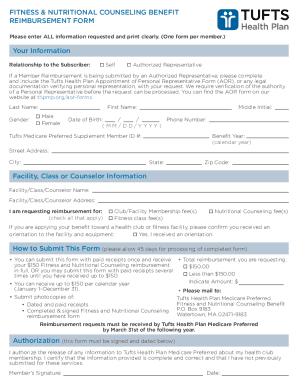
I’ve written extensively about the best diet to improve strength and performance and what that means for regular fitness enthusiasts like me. For some types of exercises, carbs are the best source of fuel. For example, endurance athletes can use fat as fuel just as efficiently as glucose. On days when I plan on really pushing myself in the gym, I often leverage exogenous ketone supplements for an extra boost. There are several supplements that can have a major impact on your recovery — assuming you’re doing everything else right already.
The key will likely be for you to try each one and determine which ones feel best for you. “The demands on your body are different when running in hot and humid conditions versus cold and dry climates,” Mandje says. The best time to re-fuel postrun is within about 30 to 60 minutes. “Our bodies are eager to rebuild to the stress of training, but we need nutrition to do so optimally,” Corkum adds.
Specifically, we’re talking about your maximum oxygen capacity, i.e., VO2 max, along with resting heart rate (RHR) and heart rate variability (HRV) to start. Your app may use AI to recommend rest, or you can interpret the numbers yourself. Whether you massage using a massage gun, book a massage with a massage therapist, or use a massage chair, for example, the act of massaging your muscles can provide a sense of relief and relaxation.
{ |}
|}Get a massage
However, some fitter individuals may need more recovery because they are regularly exercising at a higher intensity. Always madmuscles app consult a healthcare provider before adding new supplements to your routine. Before we get into the tips, let’s break down why recovery is so essential from a scientific perspective. According to the American Council on Exercise (ACE), the type of exercise you do determines how long your recovery period should be. It provides energy to cells, particularly muscle cells, during high-intensity, short-duration activities like weightlifting or sprinting. This technique helps me recover fast and optimize my gain and strength.
Rest and Relax
With genetic testing, you can uncover biomarkers linked to your unique recovery rate, paving the way for tailored strategies that enhance your recovery process. Blood flow ramps up, bringing oxygen and nutrients, while immune cells swoop in to clear the debris. It’s a messy, brilliant process, and it’s why you’re stiff as a board the next day. Sure, consistency in exercise is important, but hammering your muscles without giving them time to repair is a one-way ticket to burnout, injury, and wasted effort.
{ |}
|}However, consuming protein within a few hours of your workout can boost muscle repair, especially after strength training. Time is one of the best ways to recover (or heal) from just about any illness or injury and this also works after a hard workout. Your body has an amazing capacity to take care of itself if you allow it some time. From flip-flops to Crocs, slipping on a pair of recovery shoes can help you start to relax after a workout.
Good options include:
On top of this, there are many steps you can take both during, before and after your workout that can completely change the recovery time and process. I’m David Dack, the driving force behind The Runners Blueprint Blog since its inception in 2014. With a profound passion for running and fitness, I’ve cultivated this platform into a go-to resource for runners of all levels.
 {
{Should I run before or after a strength workout?
|}
Ice baths, cold water immersion, cryotherapy chambers, and even cold packs can reduce inflammation by constricting blood vessels and slowing nerve impulses. Consider activities like light cardio, yoga, or mobility work to help flush waste from muscles, reduce soreness, and facilitate repair between intense sessions. Hydration isn’t just about quenching thirst—it’s essential for muscle repair and overall performance. Dehydration can slow recovery by impairing muscle function and delaying waste removal after exercise.
- {
- It might include doing low-intensity exercise during the cool-down phase of your workout, which is linked to performance benefits. |}
- Here are additional things you can do to lessen your “downtime” and help your muscles recover properly. {
- Many athletes wear compression garments (i.e. bike shorts and leggings) to speed up recovery. |}{
- If I’m bruising or feel like I’ve been steamrolled the next day, I ease up. |}
- One of the most overlooked post-workout recovery tips is simply tuning in.
- Contrast water therapy, often referred to as hot-and-cold water immersion, involves alternating between warm and cold water submersions to promote muscle recovery.
My recommendation is to drink plenty of water and make sure your urine looks clear — a sign that you’re properly hydrated. Let me be as clear as possible — if you don’t consistently sleep well, it doesn’t matter what else you do. So don’t even bother taking supplements or getting a massage after a night out drinking. There is virtually nothing you can do to make up for a poor night’s sleep.
Neglecting recovery can lead to overtraining, decreased performance and even injury. Low-intensity steady movement improves blood flow and delivers nutrients to repair damaged tissues and eliminate inflammatory metabolic waste. It also prevents the accumulation of lactic acid and other byproducts in the muscles. Alternatively, frequent swimmers or hikers can turn to walking, cycling or yoga as forms of active recovery to help them feel better and more prepared on exercise days. Beginners into yoga might turn to foam rolling or stretching as a form of active recovery on days they’re not practicing, too. “Any low-impact exercises you can do in between sets, after working out or on rest days fall under the umbrella of active recovery,” she adds.
Faster recovery after leg day is entirely possible if it’s something that you want to achieve, and the science to back this up is quite irrefutable. Not only does faster recovery mean less training time lost to the recovery process, but it also means that you’re simply not feeling as miserable in the days that follow your training session. So, read this article if you want the proven steps to take to optimize the entire recovery process after a lower body workout or activity session, AKA leg day. Rest days also support hormonal balance, particularly by allowing cortisol and other stress hormones to normalize, which can improve sleep quality, mood, and overall recovery. Traditional training programs often schedule one or two rest days per week, particularly after high-intensity or heavy resistance sessions. DOMS is a normal response to challenging your muscles in new ways.
Overtraining happens when you push your body too hard without giving it enough time to recover. It can lead to poor performance, a higher risk of injuries, and feeling burnt out. Implementing even a few of these recovery best practices can enhance muscle repair, reduce injury risk, and help you avoid overtraining.





















